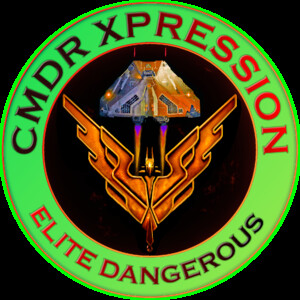Lost Souls 3 Expedition Log - 33080703
09 Jul 2022XpressioN
Long Voyage Ahead - Pt 2
Spent a couple of days at WP 12. Had to celebrate, so drinks flowed like water and was way too disorientated to concentrate for the next waypoint. After getting back in order I started mapping my route and had a couple of POIs in my mind. Now that I got used to long distances, I decided to jump to a couple of stars quite far away from WP 13. There was a system with a planet full of canyons that I was looking forward to visit. This was nearly 10kLy away from where I was. So I fired the thrusters and started jumping systems, scanning those relevant along the way. We had a meetup and after we all performed a mass jump, we proceeded our way to the next destination.




I landed on an planet with Thin Methane-rich Atmosphere, quite rare, and had a couple of Biologicals that I scanned. Found Bacterium Bullaris, Osseus Discus and Fumerola Nitris. I took a break there while I was running through the logs and checking the route ahead.



As I was jumping from system to system, heading East in the Formidine Rift sector, I got to Tradgio PN-A d1-10. This had a Type A star and a couple of ringed gas giants including also ringed landable planets. Some of these planets had high gravity so I wasn't allowed to disembark. I hopped from one planet to the other to check out for any Geological features. Found Silicate vapour geysers in most of them.









Travelled a couple of days more to reach my destination. Finally arrived at Dryaea Phlai IB-P b19-0 (White Walker’s Nightmare), so I checked it out. There was a particular planet I wanted to visit. Planet 4a: A small landable icy body orbiting a Gas Giant. The body is remarkable for being entirely covered by deep ridges. Each one is several km wide and high with sheer cliffs. It gives the impression of having been scoured by the claws of some gargantuan creature. In the star’s light it appears a vibrant icy teal-blue with a translucent quality. It is particularly beautiful when approached from the dark side; where the valleys shine a green blue like electricity coursing over a black ball.



It was time to head to WP13. Most of the other commanders had already made it there, so it was my turn to show up. On route I visited Oob Aeb XV-P b46-0 (Celestial Slingshot) as well. At the beginning of the Outer Arm Vacuus is this very peculiar Earth-like World. It orbits a cold brown dwarf star with an extreme eccentricity. At its periapsis, it is a mere .6 ls from its parent star, grazing its exclusion zone. The Earth-like's quick orbital period of 3.4 days makes it an excellent waypoint for any expedition through the Outer Arm.

I set course to visit a planetary nebula and on my way I scanned a couple of Biologicals. Since I was awarded with the Exobiologist rank of Elite V, the scientists at the Vista Genomics Labs sends me all type of requests to gather samples for them. I enjoy exploration and sampling interesting species. Who knows, perhaps one day I get to discover a new species myself.







Managed to sample the rare Recepta umbrux as well. A recepta species that grows a thick latticed structure for protection. A fine translucent membrane stretches between its gaps, allowing sunlight to penetrate and reach the inner organism for photosynthesis.


Systems with Earth Like Worlds always brought a smile to my face when I discovered them. Earth-like Worlds and Water Worlds are quite obvious on the system map, especially if listening to the sound they make. Terraformables, however, do not differ from normal planets at first glance, so they need to be scanned. The mass of the planets and distance from the star are the next key factors. The size of Mars is approximately the low boundary of terraformability, which is half the radius of Earth and tenth its mass. Next, pay attention to the size of the star and the distance of candidate planets and try to work out whether they are in the habitable zone of the star. This is approximately 1AU for stars of 1 solar mass, and can be determined for other stars using the inverse-square law. For example, for a star of 2 solar masses, it's the square root of 2, or ~1.4AU. Many terraformable metal planets may seem worthless at first glance, but if their temperature is right, they are potential candidates.


More ringed planets on the way, so more opportunities to take photos of these marvellous objects in the vastness of space.





Ten more jumps and I made it to Spongou FA-A e2 (Spongou Nebula). Situated approximately 21,000 LYs from Sol, this purple planetary nebula sits on the outer rim of the galaxy, beyond the mysterious Formidine Rift.


All I had to do is heading North now, in order to reach my friends at WP13. but first, a couple of POIs to reach and admire.
Previous Part - Long Voyage Ahead - Pt 1
Next Part - Long Voyage Ahead - Pt 3
